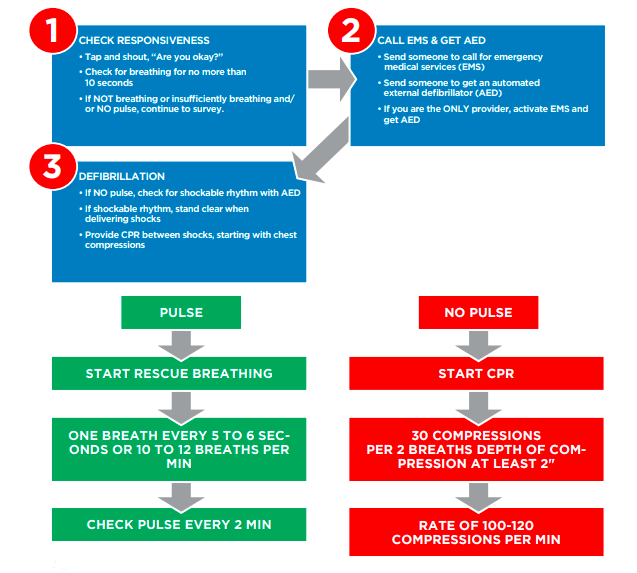ACLS Cases Respiratory Arrest
Individuals who are determined to be in respiratory arrest require attention right away, as they usually have ineffective breathing patterns that need immediate attention. Causes of respiratory arrest are varied; they can include (but are not limited to) cardiogenic shock and cardiac arrest. The BLS or the ACLS protocols can be used to resuscitated individuals who are showcasing signs of respiratory arrest.
When an individual is having trouble breathing or isn’t breathing at all, he or she may have respiratory arrest.
If someone is breathing ineffectively, it can be agonal or gasping respirations, which can often go unrecognized.
BLS Survey

Figure 20
ACLS Survey

Figure 21
Type of Airways

Table 4
As can be seen in Table 4, basic airways are listed in the right column while advanced airways are listed in the left column. Only experienced providers should administer the placement of OPAs and NPAs, even if they are categorized as basic airways. An ACLS certification does not offer enough training to administer the insertion of advanced airways, which demands specialized training. However, all ACLS providers should be familiar with the proper management of advanced airways in order to be part of an effective life support team.
When performing CPR, the individual must be lying on their back, as gravity can cause various parts of the mouth (including tissues of the throat, the tongue, and the jaw) to fall and close the airway. Keeping the airway in an unconscious individual open can be difficult, and it demands external support.
First, in all airway interventions, the airway must be opened, by pushing the forehead back while raising the chin upward (Figure 22). By doing this, the provider creates a straight and unobstructed path from the trachea to the nose.

Figure 22
Giving too many breaths per minute or too many large breaths (also known as over-ventilating) can be harmful for the patient, as it will decrease venous return to the heart, increase intrathoracic pressure, diminish cardiac output, and cause individuals to vomit.
